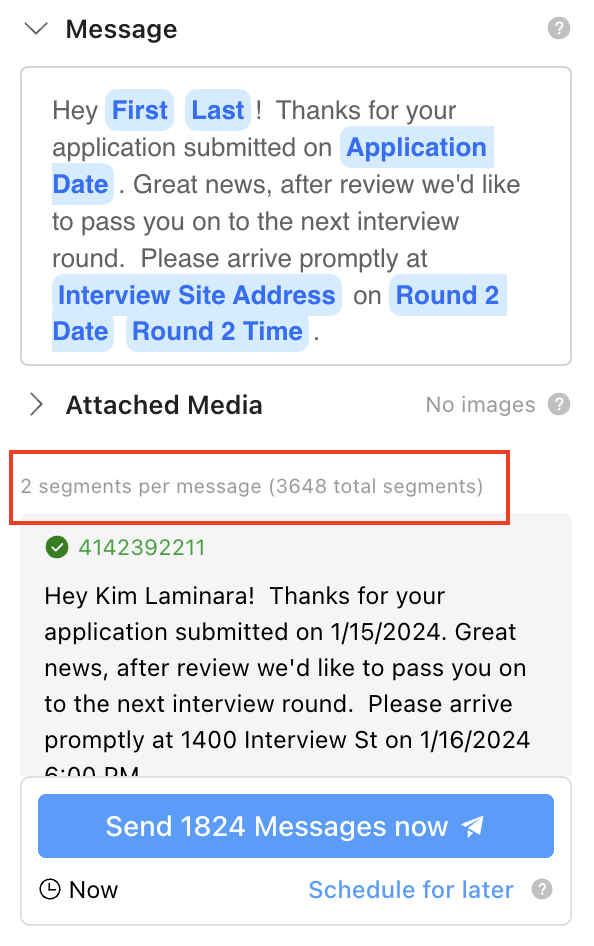Table Of Contents

Introduction
Understanding how segments are calculated is foundational to figure out pricing for your SMS messages.
While it looks complicated at face value, US carriers (and the texting industry as a whole) calculate pricing this way because the length of a message dictates how costly it is to deliver it to individuals. As a comparison, it’s a lot like sending a letter through the mail vs shipping a 30 pound package.
At Sheet Gurus SMS, we price according to the same standard across the US and we’ve simplified this by creating an automatic segment estimation calculator in our addon. This can be found above the message preview boxes on the addon and will look like the area highlighted in the red box.

In addition, we automatically convert your messages to the best and cheapest encoding possible. That being said, it’s still valuable to understand how segments work and how crafting your message in certain ways can translate to cost savings.
Now, let’s dive into how segment calculation works behind the scenes.
Segment Overview
Taking the package shipment analogy a step further, sending texts is a lot like shipping a package with a predefined weight limit. The texting industry has defined 160 characters as a standard size for a single segment. So, if we decide to send a message that is greater than 160 characters, we’ll need to ship multiple segments to accommodate.
This is why segments are necessary and how messages could be packaged up as multiple segments.
Unfortunately, US carriers and the texting industry have decided that not all segments are created equally.
Types of Segments
GSM-7 vs UCS-2 are the two types of encoding of segments. Encoding is necessary to translate segments into a common language that all mobile phones can understand.
GSM-7 is the standard US carrier encoding and allows carriers to translate messages into 160 character segments.
There are cases where segments may be encoded as UCS-2 and for the price conscious, this encoding scenario may be one to avoid. And that’s because
UCS-2 segments can only contain 70 characters vs the GSM-7 standard of 160 characters.Segments may be encoded as UCS-2 because there are characters used that GSM-7 cannot handle. A good rule of thumb is that special characters used in non english languages or emojis will trigger a UCS-2 type of encoding.
Twilio publishes a
helpful tool that’s great in identifying UCS-2 special characters if needed.Ways to Save
Consider the following creative solutions the next time you craft your marketing or communication strategy.
- Check our addon segment calculator or the Twilio segment calculator tool to stay within segment limits.
- Limit messages to GSM-7 compatible characters and avoid using emojis.
- If UCS-2 characters are required, consider splitting messages up. One that includes special characters and one that does not.

